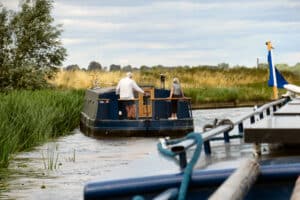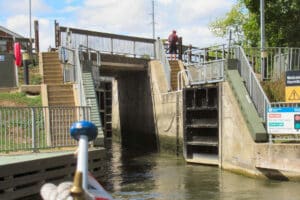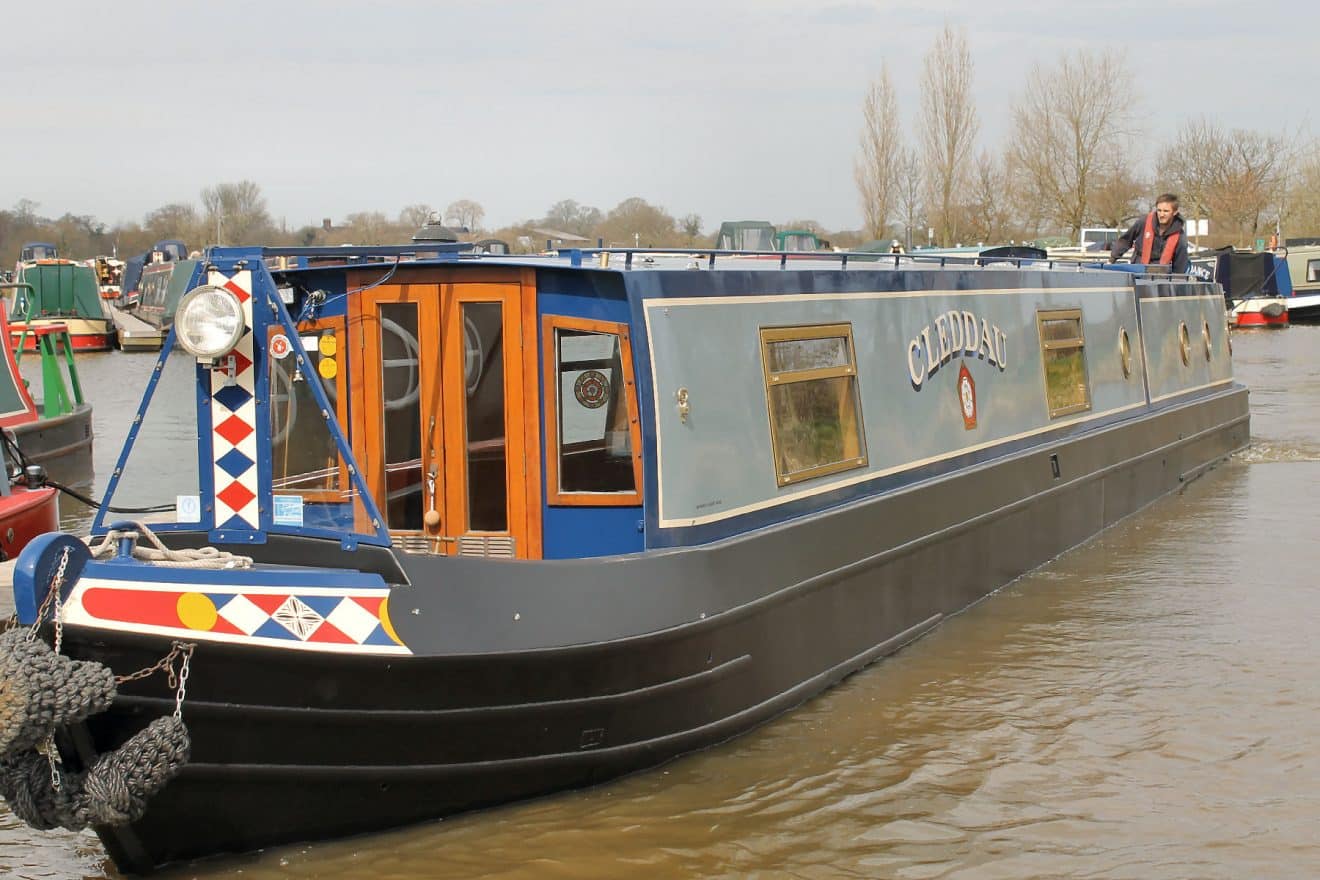Snippets and scenes en route to Ely
St Ives – Ely: 22¾ miles, 3 locks
It was a pleasant evening at St Ives. Tucked below the wall of the Town Quay there is a degree of privacy not always afforded in a place where there is high footfall. From the quayside there’s not a lot of boat visible apart from the roofline.
On climbing up the stone steps during the afternoon there had been a barrage of questions about the amount of electricity generated by the solar panels. 
Then mid-evening a young voice exclaiming at the ducks drew Boatwif’s attention. Up above was a German-speaking toddler with his bi-lingual father.
“How long is the boat?”
“In feet or metres?” (Metres were preferred).
“And how long is the bridge?”
Conversation ensued: North Germany – Kiel Canal – boats that carried coal from the Duke of Bridgewater’s coal mines into Manchester – freight on the German rivers…
The German toddler was wriggling as foreign words swirled above his head. So a sequence of Guten Morgen, good morning, Guten Abend, good evening was rehearsed with him.
.A young teenager nearby joined the exchange. “I know German and French, but I’m dropping Latin,” he admitted.
Was this the first time that Latin had become a riverside reference? After a final round of Guten Abend the toddler was taken off to bed.
The teenager and his father hung about – and shortly the teenager was the umpteenth visitor to take a walk through the boat to see what the inside looked like. Unfortunately for him the stern doors and back hatch had already been closed for the night so he gained only a very vague impression of what happened when the boat was being steered…
A visitor the previous day had timed her trip through the boat in broad daylight when all the hatches and doors were open. It was Oleanna’s boat cat which (uninvited!) had tiptoed through, (See here for Tilly’s conclusions. ) When Cleddau passed Oleanna on the outskirts of St Ives on Monday morning Tilly was already out exploring the trees and bushes… 
From dusk the St Ives bridge was lit up again 
Onward then on Tuesday morning – through the large St Ives Lock, the only boat in the lock chamber, but the top gates were closed and the guillotine button pressed by the young boys on an upcoming hire boat. 
Between St Ives Lock and the next lock there are a few pretty miles (passing for example The Pike and Eel at Holywell where on at least two previous occasions Cleddau has stopped). 
The Brownshill Staunch is one of a kind: it’s very exposed to the wind, a large industrial use conveyor belt crosses the river at that point, 

“We’ll stay and help you,” said one, “with yer ropes.”
Down went the third boat of the trio. The lady crew member at the guillotine panel reset the lock. The Captain meanwhile had prepared a plan: with the long barge pole he poled the stern away from the pontoon, put the rudder across with the engine in idle, replaced the pole without losing his position, reversed hard back and then aimed forward to arrive at the lock once the gate was fully raised. 
The rest of Operation Brownhill Staunch and the transition along the tidal couple of miles to the manned Hermitage Lock went smoothly.
Then Cleddau was on the Old West River. Along its relatively featureless course boaters can be uncertain of their exact location for seemingly miles. The wind, though warm, was strong… 

Realisation dawned that there was a cruiser behind – and a boat ahead. The wide beam kindly allowed an overtake 





Onward on Wednesday, 


There were wind lanes on the water,
on the right bank the entrance /exit to the non-navigable Soham Lode 



Next, some time in Ely and onward to Denver.
FOOTNOTE: Cleddau is heading to Crick Marina in Northamptonshire for a winter mooring. Miles and locks still to go to Crick: 129 miles, 72 locks
2022 Monkton Moments*– 10 (Monkton Moment*- a reference to / recognition of Cleddau’s Pembrokeshire connections)













Recent Comments